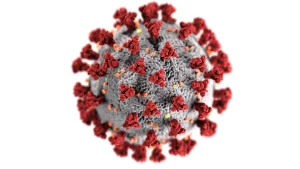Origins of COVID-19

The origin of COVID-19 is a complex and multifaceted topic. Whilst there’s still ongoing research and debate, here is a comprehensive summary of the current understanding.
Early Cases and Detection
The first reported cases of pneumonia-like illnesses emerged in Wuhan, China in December 2019. The initial cluster of cases was linked to the Huanan Seafood Wholesale Market, which sold live animals, including bats and rodents, in addition to seafood.
Investigations and Theories
-
Animal Origin Theory: COVID-19 is believed to have originated from an animal source, with bats being the likely natural reservoir. The virus may have been transmitted to humans through an intermediate animal host at the Wuhan market.
-
Laboratory Incident Theory: Some have suggested that COVID-19 may have originated from a laboratory in Wuhan, possibly through a leak or accident. However, there’s currently no conclusive evidence to support this theory.
-
Other Theories: Some researchers have proposed alternative explanations, such as the virus being transmitted through contaminated food or other environmental sources.
Scientific Consensus
The scientific community has reached a general consensus that COVID-19 is most likely of animal origin, with bats being the natural reservoir. The closest known relatives of SARS-CoV-2 (the virus that causes COVID-19) are found in bats, and the genetic similarity between the two suggests a recent common ancestor.
WHO Investigation
In May 2020, the WHO launched an investigation into the origins of COVID-19. The WHO team, which included international experts, visited China in February 2021 and reported their findings:
-
The team concluded that the animal origin theory was the most plausible explanation.
-
They identified the Huanan Seafood Wholesale Market as a potential point of emergence.
-
The investigation also highlighted the need for further research to determine the exact origin and transmission route.
Ongoing Research and Debate
The origin of COVID-19 remains an active area of research, with ongoing studies and debates. Some researchers continue to explore alternative explanations, while others are working to better understand the animal origin theory.
In summary, while the exact origin of COVID-19 is still not fully understood, the scientific consensus suggests that it’s most likely of animal origin, with bats being the natural reservoir. Further research is needed to determine the exact transmission route and to better understand the emergence of this virus.

